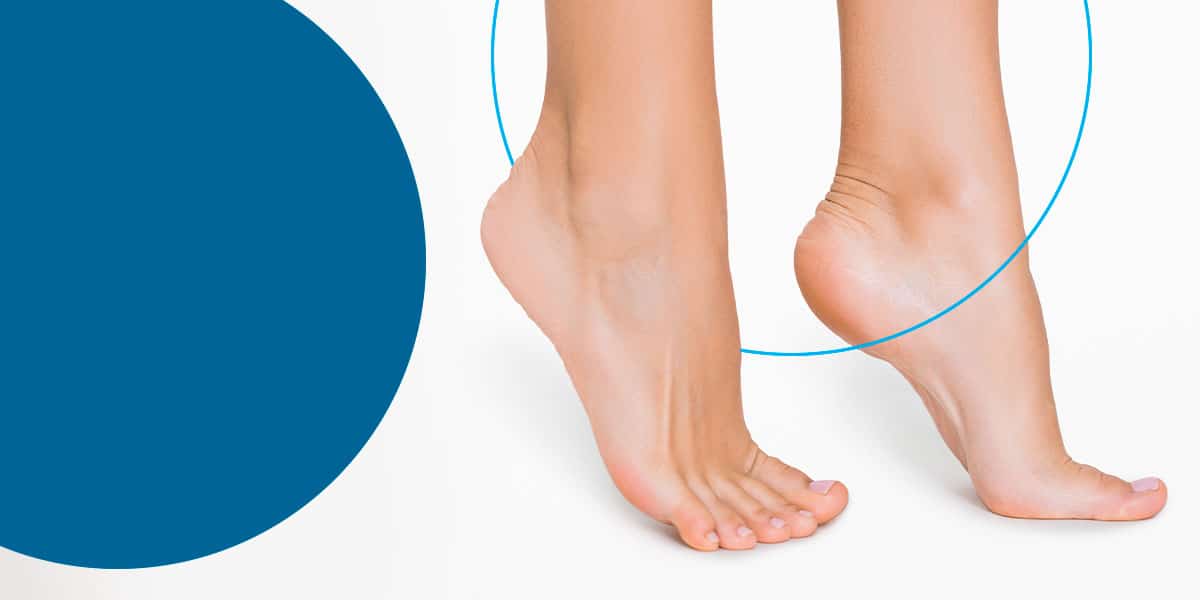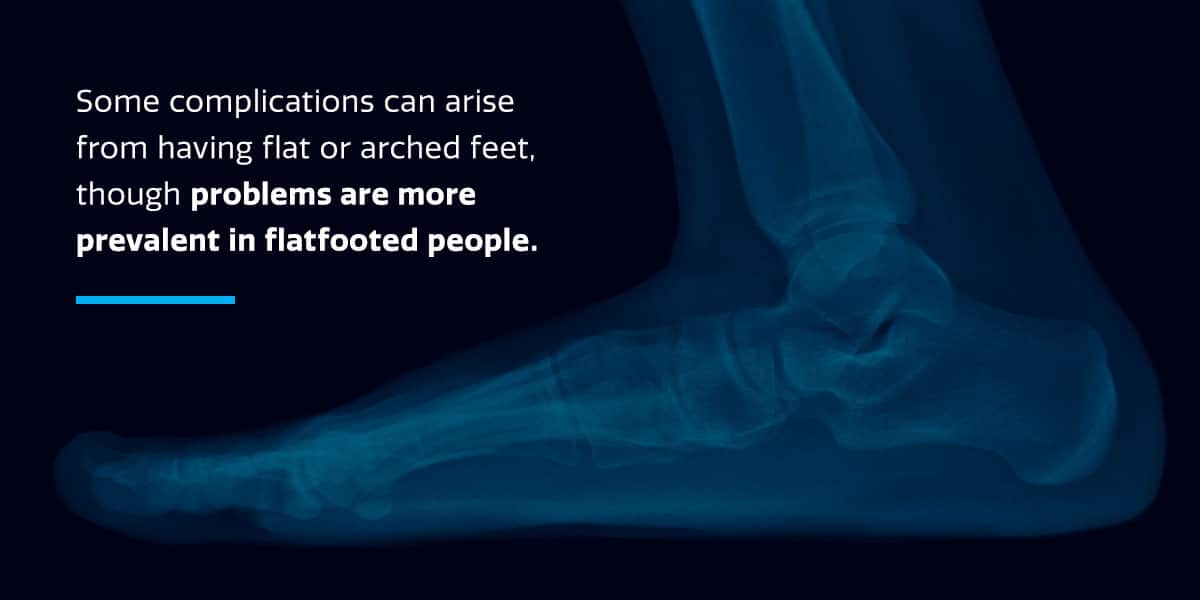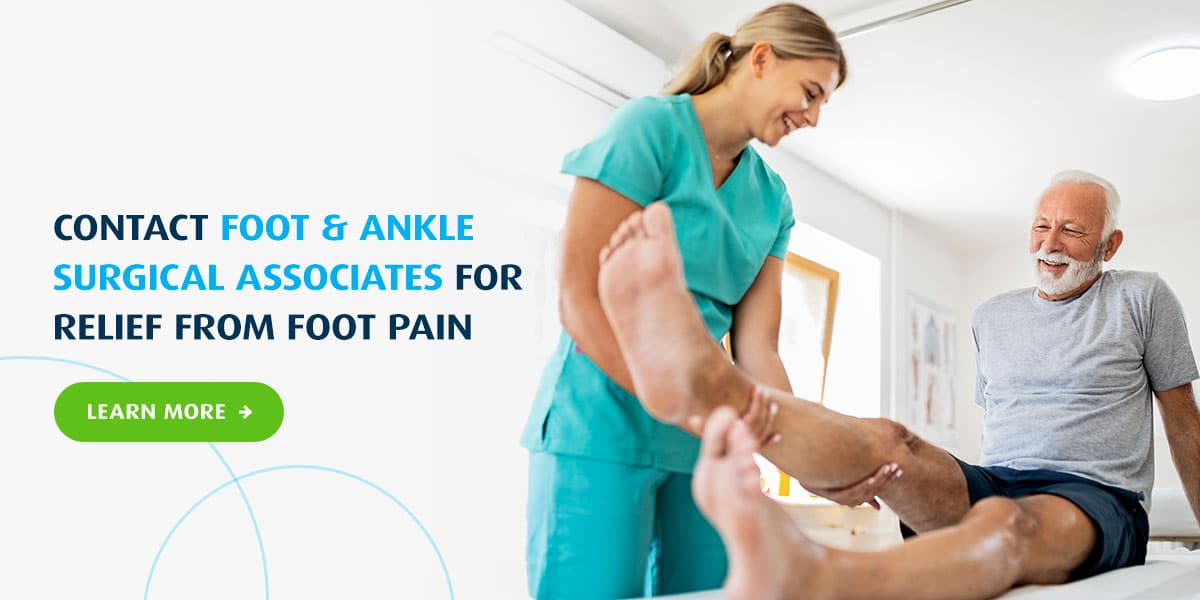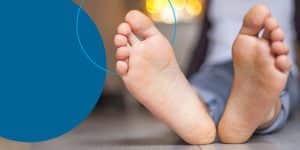
Podiatrists classify feet into different types based on the arch or instep height. This profile can help identify potential foot-related pain points you might experience later in life.
Read for more on identifying flat versus arched feet, their causes, typical problems and treatment options if you struggle with issues related to having either of these foot types.
Identifying Flat Feet vs. Arched Feet
Feet can range from having a high arch to being completely flat. Your arch height may affect your posture, leading to skeletal issues that cause discomfort. You might also be fortunate not to experience any symptoms associated with your foot type. Often, skinnier feet have high arches and can fit into tight, pointed shoes, while broader feet tend to be flat and require wider shoes to fit comfortably.
It’s easy to identify whether you have flat feet or arched feet. Here’s how you can tell.
- Water test: Wet your feet and stand on a dry surface. When you step away, you’ll see an imprint of your foot. Space between the ball of your foot and heel will indicate an arch, while a clear outline of your entire foot indicates flat feet.
- Finger test: Place your foot on the ground and try wedging one or more fingers underneath. An arched foot will easily fit fingers, while flat feet won’t have space to accommodate them.
Is it better to have arched or flat feet? People with a reasonably spaced arch that is not too high or fully flat on the ground typically experience the fewest problems attributed to their weight balance distribution.
What Causes Flat Feet?
All babies are born flatfooted. Arches start forming by age 6, but only some children develop arched feet. Adults with normal or high arches may experience collapse that results in the condition formally known as flatfoot.
Weakened tibialis posterior muscles can lead to adult-acquired flatfoot due to these specific muscles’ deterioration. Fortunately, you can fix flat feet with a podiatrist’s guidance.
Common Issues Associated With Flat and Arched Feet

Some complications can arise from having flat or arched feet, though problems are more prevalent in flatfooted people.
Flat Feet Problems
People with flat feet tend to have issues with their posture and gait. Weight also plays a factor, as flat feet are less likely to distribute weight well. Problems that result from an improper gait and weight can lead to a few other issues, including:
- Stress fractures caused by shin splints
- Increased lower back pain
- Stretched or torn arch tendons and ligaments
- The development of tendonitis
- Increased knee pain due to the weight imbalance
- The promotion of foot deformities like hammertoes and bunions
- Increased risk of posterior tibial tendon dysfunction
- Aching feet after prolonged standing
Arched Feet Problems
Balance challenges are common among people with high arches, since the foot’s heel and ball solely support your body’s weight. This instability increases your chances of injury like ankle sprains or fractures because the ankle tends to roll due to a lack of full support in the foot.
The heel and ball also absorb most of the impact when running and participating in sports that require jumping, like basketball and volleyball. These parts are susceptible to overuse damage, since they lack the additional surrounding support to cushion against the impact.
Some further complications from arched feet include the following.
- Increased risk of arthritis due to the foot’s rigidity
- Shin splints and knee pain from a lack of shock absorption
- Inflammation that causes metatarsalgia, a condition where prolonged walking or standing leads to intense pain in the foot’s ball
- Plantar fasciitis. or inflammation of the ligament connecting your heel and toes that causes acute, stinging pain in the heel in the morning
Treatment for Flat and Arched Feet
Foot treatments can be surgical or nonsurgical, depending on the severity of your pain. This problem usually begins gradually and worsens as you continue putting pressure and weight on your feet without the appropriate support. Some forms of treatment include the following.
- Orthotics: This shoe insert for flat feet forms an arch that balances and enhances function.
- Appropriate footwear: Wearing the correct shoes makes a significant difference in relieving foot discomfort. Specialized Vionic shoes support your feet while relieving pain, regardless of the arch or lack of one.
- Foot exercises: The foot has numerous muscles that work together to assist in walking, running and maintaining your balance. Conditioning your feet with repetitive movements can strengthen these muscles, improve your gait and ease the discomfort associated with having flat feet or high arches. Specialized physical therapy will stretch and strengthen the calves and tendons to assist with better foot function.
- Braces: An ankle or foot brace provides support by absorbing the pressure on the tendons. A cast is an alternative to wearing a brace if the tendon pain and swelling is severe, though you may have to wear it for a few weeks for maximum effectiveness.
- Anti-inflammatory medication: Steroid or cortisone injections target the site where the pain is most prevalent, though injecting medication into the posterior tibial tendon requires care and caution to avoid severing it.
- Surgery: The last resort is usually surgery. A doctor will usually only recommend this solution after assessing your feet and determining your pain is extreme enough to interfere with your quality of life.
Always discuss any foot treatments with an experienced podiatrist to ensure you receive the appropriate support for your specific concerns.
Contact Foot & Ankle Surgical Associates for Relief From Foot Pain

Foot pain can disrupt your daily activities and routine, but it doesn’t have to be that way. Our highly skilled podiatry team can treat any foot disorder, from mild to severe cases. We are passionate about getting you back on your feet to enjoy life without pain and discomfort.
To discuss your foot-related issue, call us at 360-754-3338 or complete a contact request form and we will get in touch to arrange an appointment.




